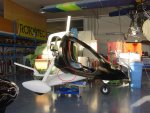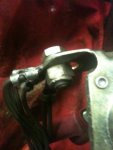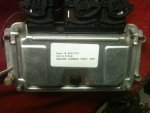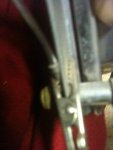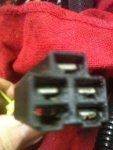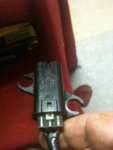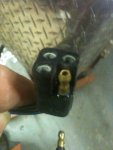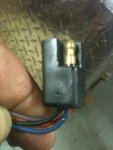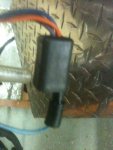Hello All,
When I was doing the Yamaha, I had to deal with all the "features" like engine shutting down for throttle position sensor, coolant temp, oil level. What I did was use the wireing diagram to find the sensor leads and then read the snowmobile manual to find out how to test the sensor and then fool the ECU into thinking everything was normal. For example, the manual gave different resistance for the water temp sensor at low, normal and high opperating temperatures. I just jumped those two terminals on the ECU with a resister that matched the resistance of the sensor in the normal range. For the throttle position sensor, I just had to jump the two terminals with a wire because the switch needs to be closed in normal opperations. In the end my ECU only had about 5 wires comming from it. I did not use the Yamaha dash at all and used all the existing instruments in the dash of my airplane to monitor the engine.
This engine was not fuel injected, so I only had to deal with ignition and, charging and all of those special snowmobile "features"
Jason
Thanks Jason,
I wish I could get more feedback from the Yamaha fans.,
If I tell the ECU that the temp is normal, I am not sure that it will supply the extra fuel for initial startup and if the idle air motor will adjust the rpm for the start up, Like the choke does for a carb. Also the temp will select the pulse time for the injectors. I am sure Vance or Automan could really describe this much better than I That is great that you only had 5 wires.
We have 32 wires or pins in the 1st plug, 48 in the second, and another 32 in the 3rd.
This is what it needs to be reduced to:
sensors & controls for Boost Pressure,Crank poistion, Air intake Pressure/Temp, Knock ,Pto & Mag coils, Pto and Mag injector, Cam phase, Engine Coolant, Lambda , Ambient Pressure, Throttle Position, and Wastegate
If I get an aftermarket ECU, I can hook up a laptop to the motor and map the performance at all of the temps, and all of the rpm range. Most have a data log feature that you can see what it is doing in flight.
Maybe all of that can be done with the Poloris ECU? I don't know. I have a code reader, I am going to try on it before I swap the ECUs.

